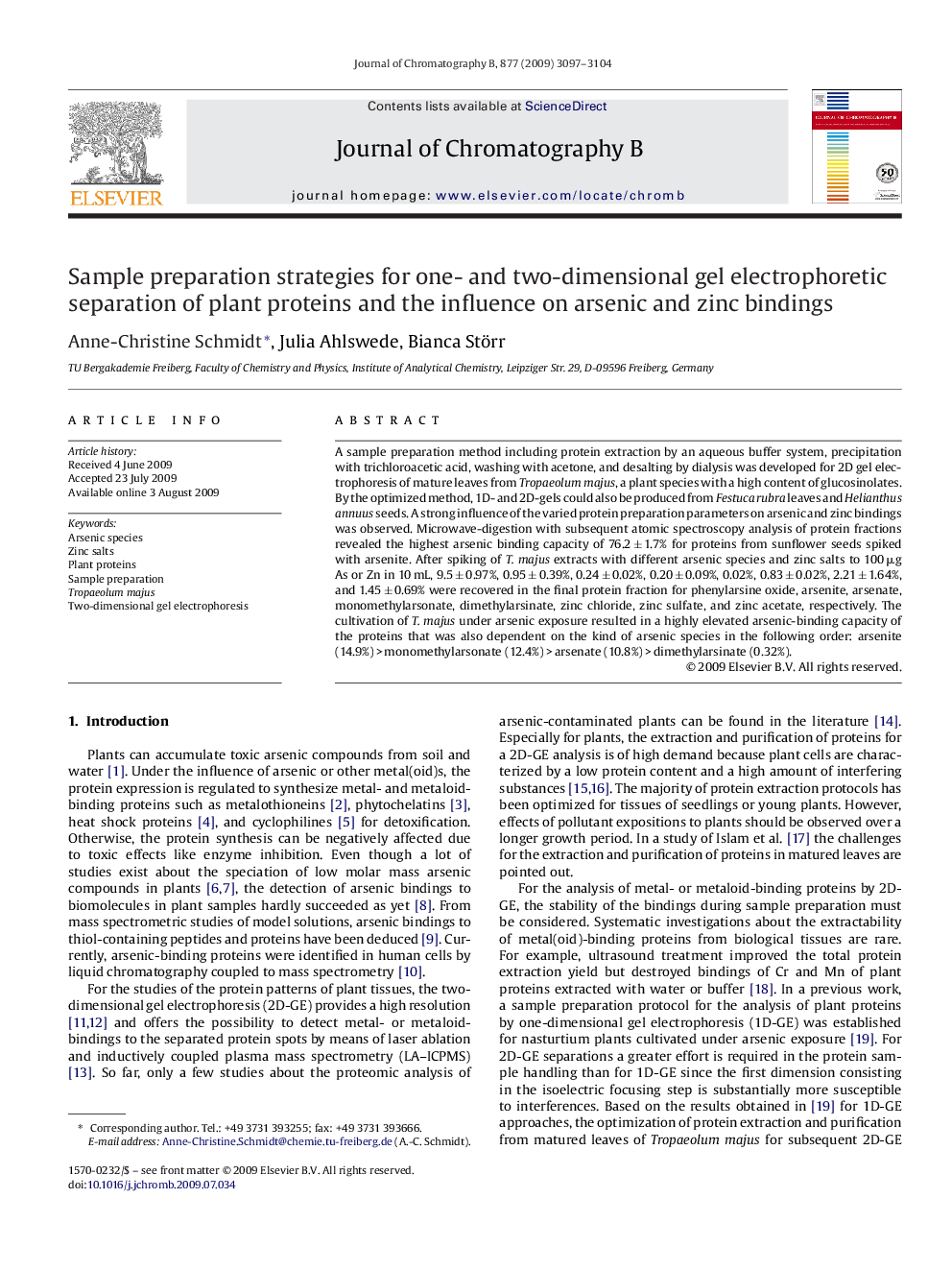| Article ID | Journal | Published Year | Pages | File Type |
|---|---|---|---|---|
| 1214286 | Journal of Chromatography B | 2009 | 8 Pages |
A sample preparation method including protein extraction by an aqueous buffer system, precipitation with trichloroacetic acid, washing with acetone, and desalting by dialysis was developed for 2D gel electrophoresis of mature leaves from Tropaeolum majus, a plant species with a high content of glucosinolates. By the optimized method, 1D- and 2D-gels could also be produced from Festuca rubra leaves and Helianthus annuus seeds. A strong influence of the varied protein preparation parameters on arsenic and zinc bindings was observed. Microwave-digestion with subsequent atomic spectroscopy analysis of protein fractions revealed the highest arsenic binding capacity of 76.2 ± 1.7% for proteins from sunflower seeds spiked with arsenite. After spiking of T. majus extracts with different arsenic species and zinc salts to 100 μg As or Zn in 10 mL, 9.5 ± 0.97%, 0.95 ± 0.39%, 0.24 ± 0.02%, 0.20 ± 0.09%, 0.02%, 0.83 ± 0.02%, 2.21 ± 1.64%, and 1.45 ± 0.69% were recovered in the final protein fraction for phenylarsine oxide, arsenite, arsenate, monomethylarsonate, dimethylarsinate, zinc chloride, zinc sulfate, and zinc acetate, respectively. The cultivation of T. majus under arsenic exposure resulted in a highly elevated arsenic-binding capacity of the proteins that was also dependent on the kind of arsenic species in the following order: arsenite (14.9%) > monomethylarsonate (12.4%) > arsenate (10.8%) > dimethylarsinate (0.32%).
